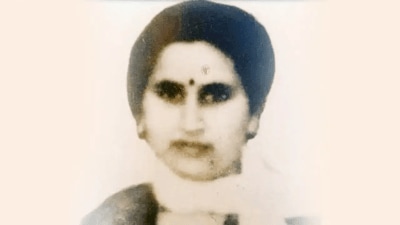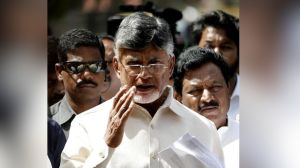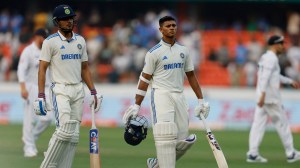Left High & Dry: Mumbai’s severe water tanker problem
A strike called by the Mumbai Water Tankers’ Association (MWTA), from Feb 8 to 14, led to a severe water crisis in the city, affecting major construction and civic works, hotels, banquets and clubs, residential societies and slums which depend on tanker water to meet a large part of their daily needs. Why is Mumbai so dependent on tanker water?
 The scarcity of water created ripples in almost all the commercial and industrial sectors, grinding to a halt construction work and affecting operations at hotels, restaurants and clubs. Photo Amit Chakravarty
The scarcity of water created ripples in almost all the commercial and industrial sectors, grinding to a halt construction work and affecting operations at hotels, restaurants and clubs. Photo Amit Chakravarty
Mumbai, the country’s financial capital, had to struggle throughout last week for one basic necessity — water!
Even in the 21st century, in the era of globalisation, Mumbai seems to be still dependent on water supplied by private tankers for various needs, even though the city is administered by the richest civic body, the Brihanmumbai Municipal Corporation (BMC), whose annual budget is higher than that of several Indian states.
The scarcity of water created ripples in almost all the commercial and industrial sectors, grinding to a halt construction work and affecting operations at hotels, restaurants and clubs.

The water crisis was caused by a strike called by the Mumbai Water Tankers’ Association (MWTA), which began on February 8 and was called off on February 14, to protest against the latest guidelines of the Central Ground Water Authority (CGWA) for withdrawal of groundwater.
Mumbai’s daily water needs & sources
Being a coastal city, Mumbai is surrounded by the Arabian Sea on three sides. Yet ironically, the city’s daily potable water supply comes from seven different lakes and dams situated in and around its outskirts.
The oldest is the Vehar Lake, built in 1860 inside the Sanjay Gandhi National Park (SGNP) in Mumbai. The others are the natural Tulsi Lake, which is also located in the periphery of SGNP. The Tansa Dam, which was built in 1892, is located in Thane district along with the Modak Sagar dam. The Upper Vaitarna is located in Nashik and is one of the primary sources of potable water in Mumbai. The Bhatsa Dam is also located in Thane district and was built in 1982. The latest is the Middle Vaitarna, which was built in 2012.
Also, there is the artificial Powai Lake, which was built in 1891 and supplies non-potable water to the city.
 The scarcity of water created ripples in almost all the commercial and industrial sectors, grinding to a halt construction work and affecting operations at hotels, restaurants and clubs. (Express Photo by Amit Chakravarty)
The scarcity of water created ripples in almost all the commercial and industrial sectors, grinding to a halt construction work and affecting operations at hotels, restaurants and clubs. (Express Photo by Amit Chakravarty)
The seven lakes are bifurcated into two systems: the Vaitarna system, which supplies water to the western suburbs and the island city, and the Bhatsa system, which supplies water to the eastern suburbs.
During the monsoon, the catchment areas of these lakes fill up and, throughout the year, water from the lakes are supplied through a network of pipelines and reservoirs after being filtered at the Bhandup filtration plant.
Besides the Powai Lake, all the seven lakes in Mumbai supply potable water to the city, which is used for human consumption.
 Mumbai has a requirement of 4,200 Million Litres Daily (MLD). However, the BMC is able to supply only 3,850 MLD every day. (Express Photo by Amit Chakravarty)
Mumbai has a requirement of 4,200 Million Litres Daily (MLD). However, the BMC is able to supply only 3,850 MLD every day. (Express Photo by Amit Chakravarty)
Mumbai has a requirement of 4,200 Million Litres Daily (MLD). However, the BMC is able to supply only 3,850 MLD every day. The BMC provides 155 litres of water per person, per day. It is assumed that there are five persons in one household, thus the civic body supplies 775 litres of water to every household per day.
Besides the lakes, there is also a network of natural wells and borewells in Mumbai. According to officials, Mumbai has a network of 1,200 wells and borewells. However, the officials pointed out that as there is no holistic policy for maintenance of groundwater resources, Mumbaikars depend on the BMC’s supply for their drinking needs.
“Back in 2006, the BMC declared that the groundwater is not fit for direct human consumption. However, it is an open truth that the tankers draw water from borewells on a daily basis, which is also consumed mainly by the slum population,” an official said.
“Many of these wells located inside private properties are also used by the owners for their non-potable requirements. Also, with changing times most of these wells have been filled up due to rapid concretisation of the city, which has led to increased dependency on tanker water,” the official added.
Origin of water tanker business & Mumbai’s dependency on them
It dates back to the middle of the 20th century.
During that time, Mumbai’s water needs were limited mainly to the island city. A large part of the present-day suburbs was still unfit for human habitation, owing to the presence of dense forests, marshy lands and mangrove belts. Till the early 20th century, those living beyond the island city were dependent on ponds and wells. However, with changing times these natural water bodies were concretised for the sake of urbanisation.
 As on today, all the private tankers draw water from 500 different borewells. (Express Photo by Amit Chakravarty)
As on today, all the private tankers draw water from 500 different borewells. (Express Photo by Amit Chakravarty)
Also, many of these ponds and ring-wells were sealed by the municipal body during this time to curtail breeding spots of mosquitoes.
Post-Independence, commerce and industry flourished in Mumbai, which led to an influx of people coming and settling in the city from all parts of the country. Thus, human habitation started to shift towards the northern parts, which at present is known as the western and eastern suburbs. All this automatically increased the demand for water.
Jeetu Shah, vice-president of the MWTA, said four proprietors started the business of transporting water through tankers in Mumbai during the 1960s. However, the formal association of tanker operators was formed only in 2014. At present, 1,800 tankers operate in Mumbai. Each of these tankers can hold 10,000 litres of water and all of them are affiliated with the MWTA.
Shah, whose family was one of the four proprietors, recalled that their first tanker was pressed into operation during 1968-69.
“During that time, Mumbai was going through a rapid industrialisation phase. Several manufacturing companies including the Cotton Mills were operating from the heart of the city. They were entirely dependent on water from tankers, as the municipal corporation didn’t have a uniform water supply structure during those days. Later, a leading tyre manufacturer also started its manufacturing unit at Bhandup in the 1970s, which became the biggest buyer of tanker water at that time,” Shah told The Indian Express.
Later, all the mills in Mumbai were shut and many industries chose to relocate out of the city and residential towers started to come up. During the 1990s, real-estate boomed in Mumbai, which led to a further increase in the city’s population. Shah said these factors increased the demand for water and as of today, a housing society requires an average 60,000-80,000 litres of water just from water tankers.
 The civic body is also encouraging real-estate builders and housing societies to dig their own borewells and water percolation pits in a bid to become self-sustainable for non-potable water usage. (Express Photo by Amit Chakravarty)
The civic body is also encouraging real-estate builders and housing societies to dig their own borewells and water percolation pits in a bid to become self-sustainable for non-potable water usage. (Express Photo by Amit Chakravarty)
“During 1982, when the Bhatsa Dam was built, people said there will be no scarcity of water in the city any longer, later the Middle Vaitarna was built in 2012 and yet there is a shortfall of water. The population of the city is increasing every day. Also, there has been an exponential rise in real estate and infrastructure growth in the city, all these leading to more and more demand for water. Therefore, no matter how many dams are built, the demand for more water is never going to end,” Shah said.
From where do tankers get their water & how they operate
As on today, all the private tankers draw water from 500 different borewells. A borewell is a deep narrow well through which natural groundwater is extracted by using artificial pumps. These borewells exist on privately owned lands as well as inside housing societies.
Shah said the tanker operators enter into an agreement with the private landowners and office-bearers of the housing societies and every month, they pay usage fees to them.
“If an operator draws 50,000-1,00,000 litres of water from a borewell daily, then monthly, he pays the owner around Rs 20,000. Also, alongside this, we pay electricity and maintenance cost as well,” he said. Besides, the BMC also charges an annual licence fee of Rs 50,000 from the tanker operators. Civic officials said these charges are for ‘health licence’, which is renewed every year after assessing the structural stability of the tanker vans.
Landowners who have borewells on their plots do not pay any charges to the BMC. The civic body is also encouraging real-estate builders and housing societies to dig their own borewells and water percolation pits in a bid to become self-sustainable for non-potable water usage.
Why is Mumbai still dependent on water tankers
P Velrasu, additional municipal commissioner (projects), told The Indian Express that the BMC through its pipelines only supplies potable water which is fit for human consumption. But for purposes like commercial activities, garden maintenance and civil engineering works, one needs non-potable water.
“A major part of the commercial sector including hotels and banquet halls are dependent on tankers, mainly because they have lawns and gardens to maintain which require a huge volume of non-potable water which can be extracted from underground only,” Velrasu said.
 Several housing societies and residential buildings that are located on elevated land parcels also acquire water from tankers on a daily basis as the BMC’s supply doesn’t reach them due to low water pressure. (Express Photo by Amit Chakravarty)
Several housing societies and residential buildings that are located on elevated land parcels also acquire water from tankers on a daily basis as the BMC’s supply doesn’t reach them due to low water pressure. (Express Photo by Amit Chakravarty)
“Another reason why these entities prefer tankers is because of flexibility as they pay the tankers only for water bought from them, while the BMC has its own fixed annual tariff,” he said.
Several housing societies and residential buildings that are located on elevated land parcels also acquire water from tankers on a daily basis as the BMC’s supply doesn’t reach them due to low water pressure.
“The BMC rules suggest that housing societies that are located on elevated lands should have an auxiliary suction pump installed within their premises. The BMC will provide water to the water chambers of these societies. Following which the water will be further supplied with the help of these pumps, which will boost the water pressure,” he said.
Alongside this, almost all the slum clusters and the informal housing sectors get their daily quota of water from tankers.
“Almost all the slum areas in Mumbai don’t have a conventional water supply network. This is the reason why they are dependent on tankers. The tankers supply water in slum areas at least twice a day and the residents collect the water in barrels for their daily consumption,” a civic official said.
Ankur Sharma, another member of the MWTA, said, “Over the past decade, Mumbai is witnessing an exponential growth in urban infrastructure. New roads and bridges are being built along with tunnels and metro railway networks. The civil works require water, therefore, as far as development is concerned, the city will continue to depend on water tankers.”
Dhiraj Mehra, a resident of Marine Drive’s Prem Kutir building, said another key reason why Mumbaikars depend on water tankers is because of BMC’s inadequate water supply.
“The BMC calculates daily water requirements by assuming there are 4-5 residents in an apartment. Our building has 26 flats and even though we get water from the BMC regularly it is not enough because in each flat there are eight residents. This is why we acquire water from tankers. Our building has its own filtration unit which purifies the water and transfers it to households,” Mehra said.
In another case, Mumbai University’s student hostel is also dependent on water supplied by tankers. During the MWTA strike, the students faced sheer inconvenience owing to scarcity of water.
 Mumbai University’s student hostel is also dependent on water supplied by tankers. (Express Photo by Amit Chakravarty)
Mumbai University’s student hostel is also dependent on water supplied by tankers. (Express Photo by Amit Chakravarty)
With no access to water tankers for five days, the students had to resort to purchasing water by spending out of their own pockets. “Water is a basic necessity. We just had enough to complete our daily chores but there was no water for other purposes, for cleaning rooms or washing clothes. There was no water in the coolers and we had to buy drinking water online,” said a resident of the New Girls’ Hostel.
Another hostel student said, “As the problem worsened, a WhatsApp message was circulated by one of the hostel officials asking us to vacate the premise for a few days and stay with our relatives. However, a lot of students here are from cities outside of Maharashtra. How can we leave the hostel at such a short notice? Furthermore, not everyone can afford packaged water. The university must provide us with basic amenities like access to BMC water.”
What does the amended CGWA state
The latest CGWA guidelines were passed in September 2020 in the Rajya Sabha and one of the many clauses states that bulk water suppliers will have to compulsorily own a 2,000 square feet land parcel for creating natural borewell points and only one tanker can draw water from one particular borewell.
“How can we own land by shelling out Rs 10-20 crore when the daily income of tanker operators per day is Rs 700-800,” Shah asked.
Shah said these guidelines became effective from February 3, 2023 and within five days, 17 tankers were seized by the authorities for non-complying with the norms, following which the strike was called.
“We didn’t go on strike, it was the guidelines that prevented our tankers from operating on the roads of Mumbai,” he said.
An official associated with the CGWA said that the primary objective of these guidelines was to abide by the orders of the National Green Tribunal.
“The primary objective of the new amendments was to ensure that groundwater shouldn’t be wasted or exploited by any means. The rule on ownership of a land parcel was implemented to ensure tanker operators don’t draw water from anyone else’s land and there should be uniformity,” the official said.
Another official said that at present the Lokayukta is hearing the matter.
“Last year a complainant was raised stating that tankers were drawing water from BMC’s catchment areas. However, these claims were refuted by the BMC and the matter went to Lokayukta. The case is still sub-judice and I believe as a pre-emptive measure the state government implemented the amended CGWA guidelines to avoid any blame as it has been passed by the Union ministry two years back,” the bureaucrat added.
Expert speak
Dr Himanshu Kulkarni, a hydrogeologist who leads ACWADAM in Pune and has been working on groundwater since 1983, said a holistic policy on groundwater management and governance in towns and cities in India is required.
“There are several cities and towns in India that are heavily dependent on underground water in the form of wells, tubewells and bore holes. This is a direct consequence of a rapidly growing demand that is always greater than formal water supply. Existing supplies are unable to meet the growing requirement. Groundwater, through wells that supply water directly or through tankers that ply the water over distances play a role in bridging the demand and supply gap of water,” Kulkarni said.
“One can see that these tankers are a ‘proxy’ pipeline, as they carry water from a source such as a well or a bore hole and deliver it to meet the demand at another point, often over long distances. Whether one likes it or not, water tankers remain an integral component of the water supplies in many towns and cities of India,” he added.
The road ahead
Velrasu said that to ensure Mumbai becomes self-sustainable in terms of having its own water supply network, the BMC has proposed to set up a 200 MLD desalination plant in Manori, whose capacity can be expanded to 400 MLD in future. The BMC is also setting up seven Sewage Treatment Plants (STPs), which will recycle and treat sewage water up to 2,464 MLD. This will also bridge the demand-supply gap.
(With inputs from Nayonika Bose)







